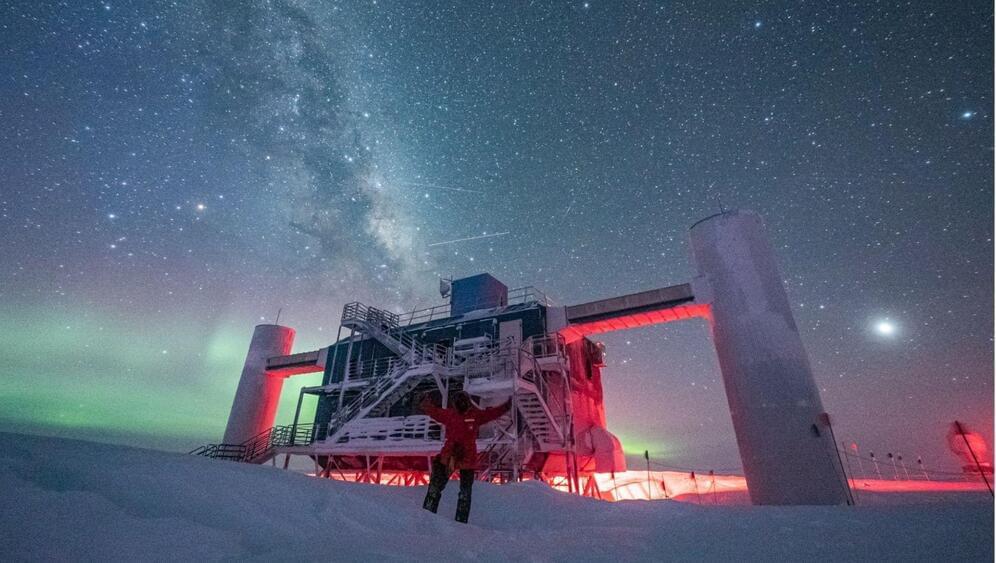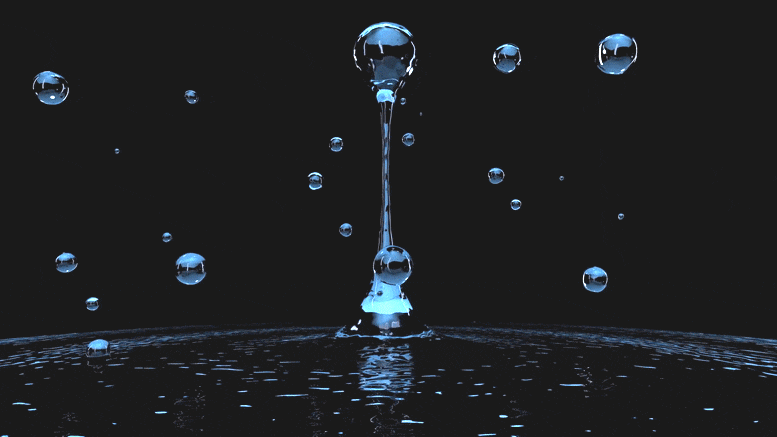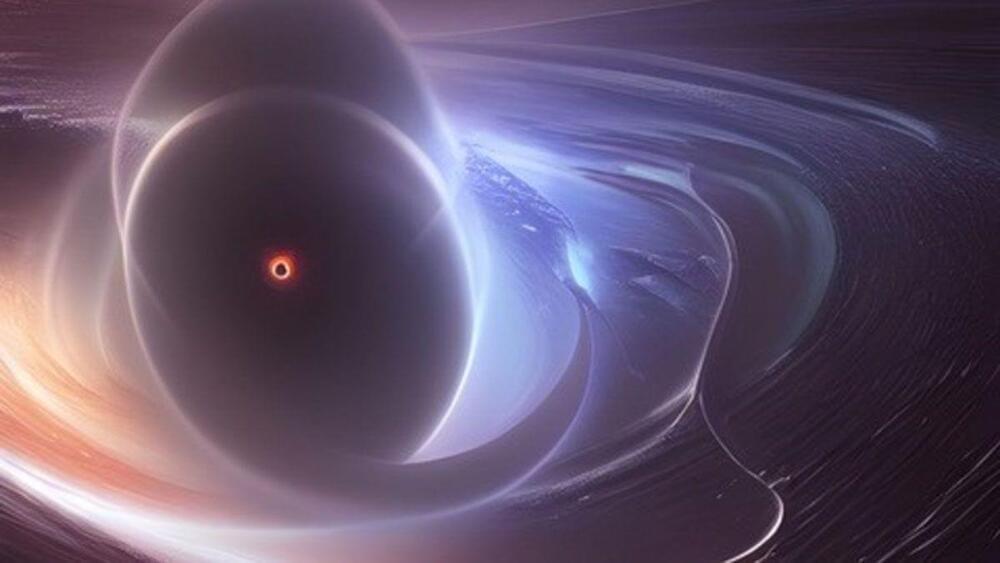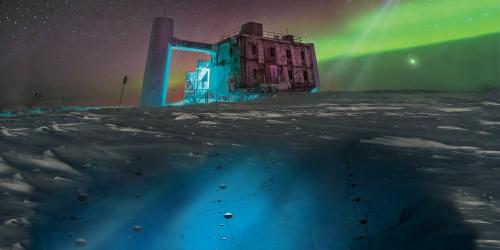On Nov. 3 a solar storm caused a temporary crack in Earth’s magnetic field. The resulting hole enabled energetic particles to penetrate deep into the planet’s atmosphere and set off extremely rare pink auroras.



A team of scientists from the University of Sciences and Technology of China has proposed a bold solution for the “measurement problem” in quantum mechanics, suggesting the eventual outcome for states of existence is determined by a “game” between the observer and nature.
For over a century, the quantum realm has imposed an abundance of bizarre obstacles along the road to understanding universal existence.
In the microscopic world of atoms and subatomic particles, nature demonstrates unparalleled strangeness, becoming unpredictable and operating in contrast to how it behaves at the macroscopic scale defined by classical physics.
Intelligence has evolved on an accelerating, exponential trendline to create a Sentience Singularity in the past, just like the progress of technology that followed it. The two are closely related, and form the first principles of futurism, and any attempt to make long-term predictions.
ATOM Chapter 1 : Prologue : https://atom.singularity2050.com/1-prologue.html.
Thumbnail image from U of Chicago.
#EvolutionofIntelligence #ArtificialSuperIntelligence #Singularity

The latest findings are “the next big step towards the realization of neutrino astronomy.”
A black hole roughly 47 million light-years away, called NGC 1,068, is spewing out mysterious and elusive “ghost particles”, or neutrinos.
Neutrinos are notoriously difficult to detect as they require precise instruments deep below the Earth’s surface to avoid any interference from cosmic rays and background radiation.

Less than 20 years ago, Konstantin Novoselov and Andre Geim first created two-dimensional crystals consisting of just one layer of carbon atoms. Known as graphene, this material has had quite a career since then.
Due to its exceptional strength, graphene is used today to reinforce products such as tennis rackets, car tires or aircraft wings. But it is also an interesting subject for fundamental research, as physicists keep discovering new, astonishing phenomena that have not been observed in other materials.
Evidence of high-energy neutrino emission from the galaxy NGC 1,068 has been found by an international team of scientists for the first time. First spotted in 1,780, NGC 1,068, also known as Messier 77, is an active galaxy in the constellation Cetus and one of the most familiar and well-studied galaxies to date. Located 47 million light-years away from us, this galaxy can be observed with large binoculars. The results, to be published today (November 4, 2022) in the journal Science, were shared yesterday in an online scientific webinar that gathered experts, journalists, and scientists from around the globe.
Physicists often refer to the neutrino as the “ghost particle” because they almost never interact with other matter.
The detection was made at the IceCube Neutrino Observatory. This massive neutrino telescope, which is supported by the National Science Foundation, encompasses 1 billion tons of instrumented ice at depths of 1.5 to 2.5 kilometers (0.9 to 1.2 miles) below Antarctica’s surface near the South Pole. This unique telescope explores the farthest reaches of our universe using neutrinos. It reported the first observation of a high-energy astrophysical neutrino source in 2018. The source is a known blazar named TXS 0506+056 located 4 billion light-years away off the left shoulder of the Orion constellation.

With the new observations we are seeing a mixture of particle physics being the new physics governing even long standing laws like gravity. Also that string theory is still alive and well. I think we may never know everything unless we essentially get to a type 5 civilization or beyond.
Finding cannot be explained by classical assumptions.
An international team of astrophysicists has made a puzzling discovery while analyzing certain star clusters. The finding challenges Newton’s laws of gravity, the researchers write in their publication. Instead, the observations are consistent with the predictions of an alternative theory of gravity. However, this is controversial among experts. The results have now been published in the Monthly Notices of the Royal Astronomical Society. The University of Bonn played a major role in the study.
In their work, the researchers investigated the so-called open star clusters, which are loosely bound groups of a few tens to a few hundred stars that are found in spiral and irregular galaxies. Open clusters are formed when thousands of stars are born within a short time in a huge gas cloud. As they “ignite,” the galactic newcomers blow away the remnants of the gas cloud. In the process, the cluster greatly expands. This creates a loose formation of several dozen to several thousand stars. The cluster is held together by the weak gravitational forces acting between them.

Black holes have properties characteristic of quantum particles, a new study reveals, suggesting that the puzzling cosmic objects can be at the same time small and big, heavy and light, or dead and alive, just like the legendary Schrödinger’s cat.
The new study, based on computer modeling, aimed to find the elusive connection between the mind-boggling time-warping physics of supermassive objects such as black holes and the principles guiding the behavior of the tiniest subatomic particles.

Gallery QI — Becoming: An Interactive Music Journey in VR — Opening Night.
November 3rd, 2022 — Atkinson Hall auditorium.
UC San Diego — La Jolla, CA
By Shahrokh Yadegari, John Burnett, Eito Murakami and Louis Pisha.
“Becoming” is the result of a collaborative work that was initiated at the Opera Hack organized by San Diego Opera. It is an operatic VR experience based on a Persian poem by Mowlana Rumi depicting the evolution of human spirit. The audience experiences visual, auditory and tactile impressions which are partly curated and partly generated interactively in response to the player’s actions.
“Becoming” incorporates fluid and reactive graphical material which embodies the process of transformation depicted in the Rumi poem. Worlds seamlessly morph between organic and synthetic environments such as oceans, mountains and cities and are populated by continuously evolving life forms. The music is a union of classical Persian music fused with electronic music where the human voice becomes the beacon of spirit across the different stages of the evolution. The various worlds are constructed by the real-time manipulation of particle systems, flocking algorithms and terrain generation methods—all of which can be touched and influenced by the viewer. Audience members can be connected through the network and haptic feedback technology provides human interaction cues as well as an experiential stimulus.
While the piece is a major artistic endeavor, it also showcases a number of key technologies and streaming techniques for the development of musical content in XR. The spatialization system Space3D, developed at Sonic Arts and implemented to run on advanced GPUs, is capable of creating highly realistic spatial impressions, and recreating the acoustics of the environment based on the virtual models in real-time using advanced multi-processing ray-tracing techniques.
“Becoming” premiered at SIGGRAPH 2022, Immersive Pavilion in Vancouver, Canada in August 2022. Opera America and San Diego Opera showcased an early preview of this work as part of the first Opera Hack presentations in 2020.